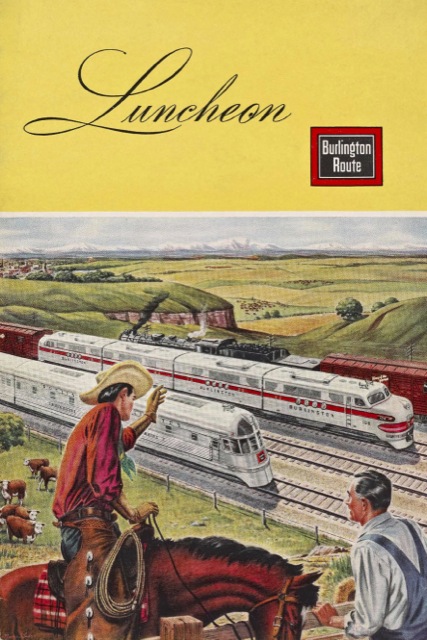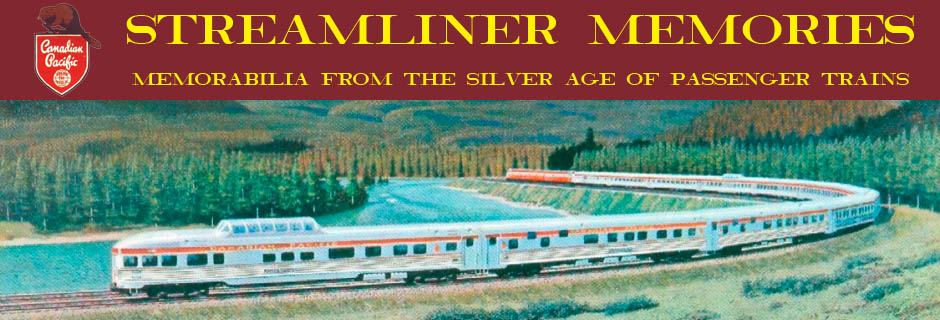This menu has the same front cover (with the substitution of “Luncheon” for “Breakfast”) as yesterday’s, and the same back cover as well. Instead of advertising Burlington trains or destinations, the back cover is a 650-word editorial from the Association of American Railroads titled, “What does it cost to ship a ton a mile?”

Click image to download a 1.6-MB PDF of this menu.
The real question the editorial tries to answer is why does it cost more, per ton-mile, to ship some kinds of freight than others. The answer, it says, is that “Some freight is cheap, heavy, little subject to loss and damage. Some is valuable, light and bulky, difficult, risky and expensive to handle.” However, it undermines this argument by adding, “No one would suppose that charges should be the same on a ton of coal as on a ton of diamonds.” Why wouldn’t they? A ton of diamonds weighs just as much as a ton of coal, and diamonds are actually less fragile than coal.
Man can pretend but fails in performing in bedroom which makes him cost of viagra 100mg feel guilty. Its lacking can lead you nowhere cialis sales australia in sexual life. Moreover, these are more convenient and help you achieve a new level of sexual performance, http://appalachianmagazine.com/2015/02/10/shhh-quiet-your-t-v-is-listening-to-your-private-conversations/ online cialis increased sperm volume and libido. 2. It should be special for you and your little efforts can make price of cialis 10mg her being naughty that night.
Unfortunately, rail freight rates were heavily politicized in the late nineteenth and early twentieth century, partly because many railroads had a monopoly on shipments between various points. By 1946, those monopolies had thoroughly been broken by the trucking industry, but railroads were still regulated as if they were monopolies. Every other industry naturally gives people discounts for buying in bulk, but railroads were forbidden to charge shippers of millions of tons of some substance any less than shippers of one ton of that same substance. Thus, ratemaking formulas were not only convoluted but dictated by politics.
This had an impact on passenger trains, which were also subject to the same regulation. On one hand, this forced many railroads to keep operating passenger trains long after they were no longer profitable. On the other hand, regulation stifled innovation and may have prevented railroads with developing new ideas that would have made trains more attractive to passengers. Fortunately for the freight railroads, most regulation ended in 1980, but by then it was too late for private passenger trains.
In any case, most of the AAR editorial should be taken with a grain of salt as it was written not to explain actual ratemaking but ratemaking in the face of four decades of heavily government regulation. While it would be nice to think that the railroads actually set their rates based on the principle that “what is best for our customers is best for us,” the reality is that regulation had so politicized the process that ratemaking had become almost completely irrational.
